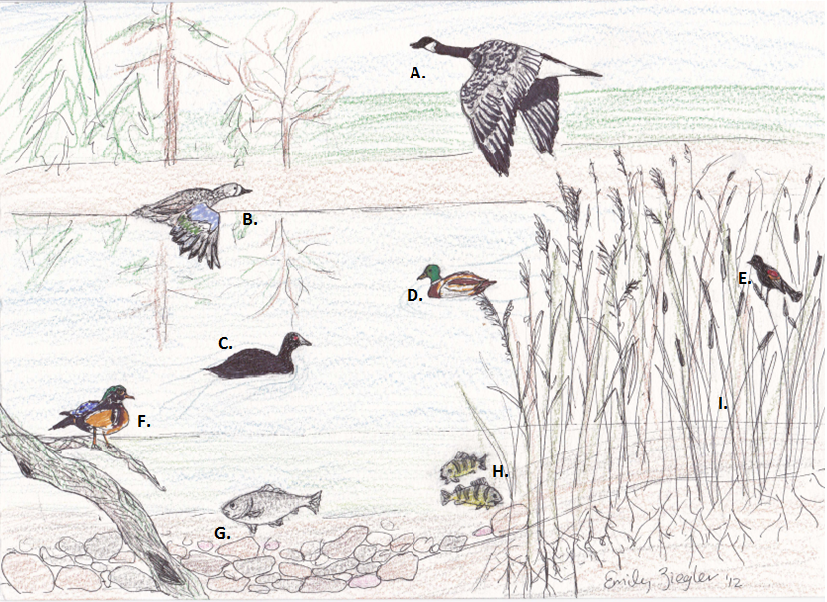Interactions
|
Every organism in nature somehow interacts with all other organisms around it. Wild rice is an important plant and food source to many waterfowl, fish, insects, and even fingi and bacteria. The drawing at the left shows just a few examples of animals which rely on wild rice as food. Click on the picture of the organism in the drawing to the left or the names of the organisms below to learn more about them through other student-made websites. |
A. Canada Goose |
D. Mallard Duck F. Wood Duck |
G. Silver Carp I. Cattails |
Not only do the organisms listed above interact with wild rice, but a number of other species do as well. These include soras, bobolinks, black ducks, green-winged teal, striped bass, white perch, shad, muskrat, muskellunge, northern pike, and rice worms (the larvae form of the moth Apamea apamiformis) which in turn support other fish, frogs, turtles, and insects (Oelke et al 1992).
Image from flickr.com. Some rights reserved by user CIMMYT. |
Diseases A variety of diseases can cause harm to wild rice plants. Fungal brown spot disease is one of concern when rice is grown in fields. The fungi, Bipolaris oryzae, grows into the wild rice plant through its stomata and cause numerous brown spots all over the plant. The plants are most suceptible to this disease at hot temperatures and high humidity conditions. Outbreaks could lead to the loss of the entire field. Pictured to the left is an image of this disease that has infected maize, another member of the class poaceae (see classification). Stem rot, caused by the fungi Sclerotium sp. and Helminthosporium sigmoidium Cav., can also cause much harm to the production of the rice. Other diseases include stem smut (caused by the fungi Entyloma lineatum), ergot (caused by the fungi Claviceps zizaniae), and bacterial leaf streak (caused by the bacteria Pseudomonas syringae pv. zizaniae and Xanthomonas oryzae) (Oelke et al 1992). |
Sustainability This year the University of Wisconsin La Crosse is focused on sustainability. Wild rice is surely a sustainable food source. It grows back each year provided that we harvest it respectively. Though in some places its numbers are diminishing, measures can be taken to ensure that it doesn't go extinct. The main protection we can offer is to protect its habitat. In Illinois, for example, about 90% of the wetlands have been damaged or destroyed and along with them, wild rice plants (Thayer 2006). |
Learn about wild rice's rich history in our country next by clicking here.
To go back to the home page simply click the 'home' tab at the top of this page or click here

